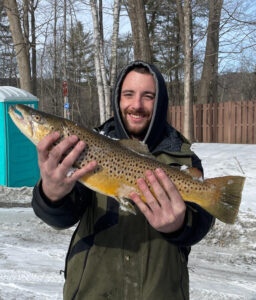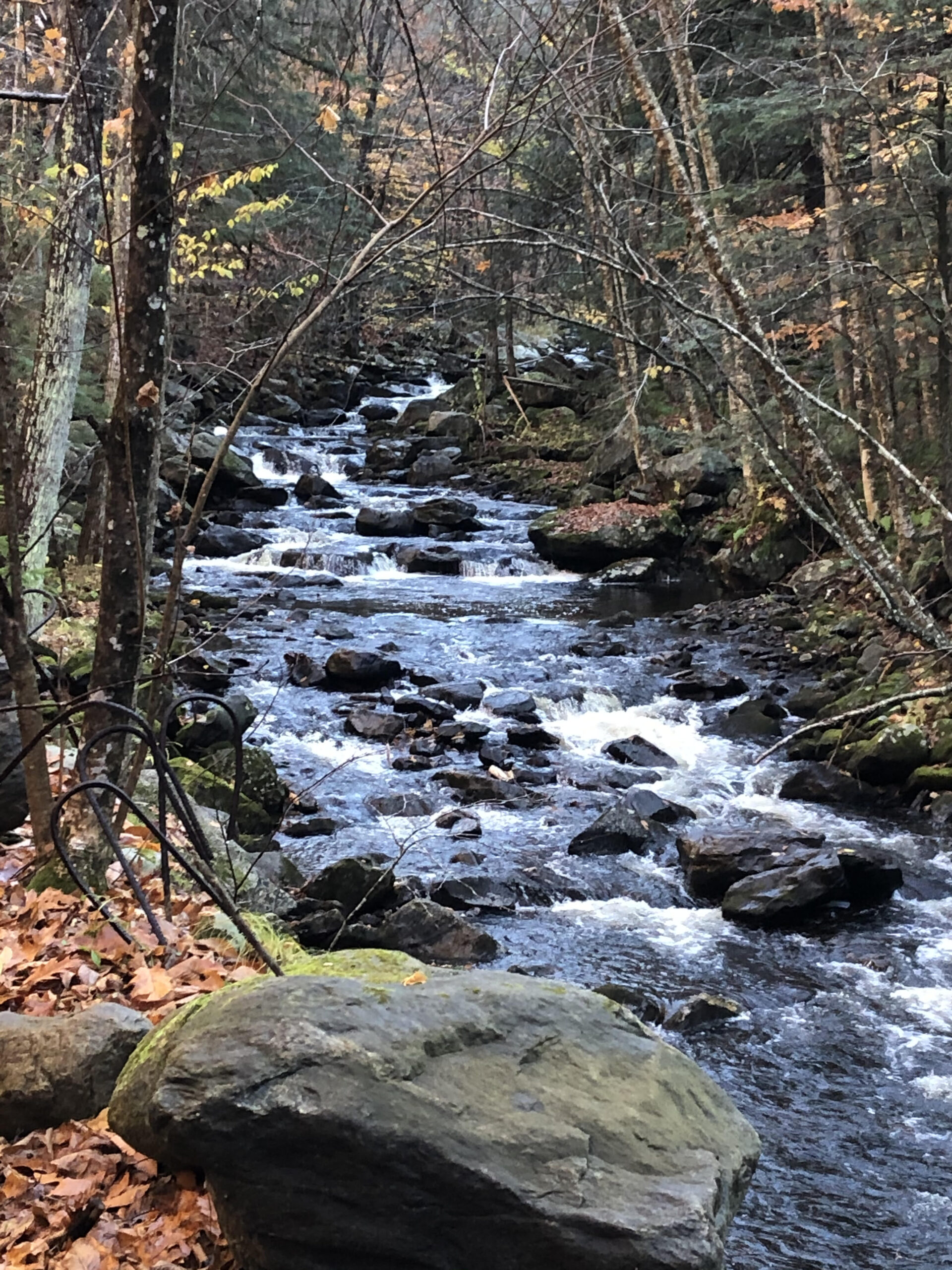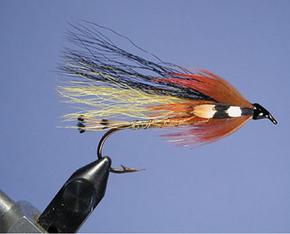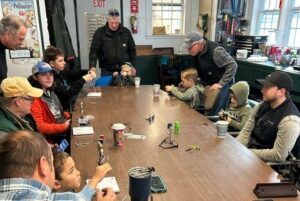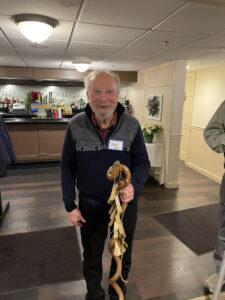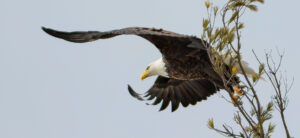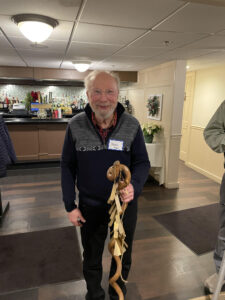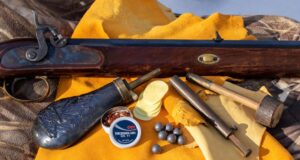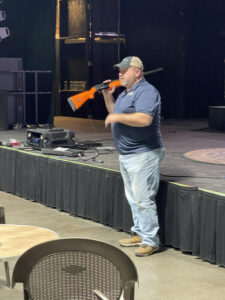There are quite a few local anglers who travel to the Adirondacks to fish. Some are fly fishermen who fish the rivers, such as the Au Sable, Saranac, Salmon and others. Some fish the lakes such as Lake Ontario, Lake Champlain, Great Sacandaga, Lake George and others. A few fish for brook trout in the smaller ponds in the Adirondacks.
Unfortunately, a study recently published by the National Academy of Sciences does not paint a rosy picture for the future of Adirondack brook trout populations in lakes. The study, titled “Concurrent warming and browning eliminate cold-water fish habitat in many temperate lakes,” explores how trout habitat is impacted by two water quality variables — climate warming and lake browning. Lake browning occurs when dissolved organic matter from forests turns the water tea-brown, thus making the bottom of most lakes in the Adirondacks unlivable for cold water species such as trout and salmon during the summer.
A research group from Cornell University and Rensselaer Polytechnic Institute learned that only about 5% of Adirondack lakes may continue to maintain water that is cold and oxygenated enough to support cold-water species given current trends. That is a significant decrease from the 1980s, when 23% of those lakes contained suitable habitat. The study provides insights into changes in key ecosystem dynamics with potential consequences for the future of temperate lakes in the Adirondacks as well as elsewhere in northeastern North America and parts of Europe.
This is not a problem in lakes categorized as “very clear.” Little or no browning keeps the water column cool during the critical months of summer. Unfortunately, most lakes in the Adirondacks do not fall into the “very clear” category.
After a few more decades of browning, most Adirondack lakes will become either too warm or too deoxygenated to support trout populations,” said. Dr. Peter McIntyre, associate professor in the departments of Natural Resources and the Environment and Ecology and Evolutionary Biology. “This is a radical departure from the past, when trout fisheries in numerous lakes were celebrated by locals and tourists alike.”
It’s imperative that we protect the modest number of buffered lakes in the Adirondacks from species invasions, nutrient and salt pollution, and other forms of environmental degradation,” said Stephen Jane. (former Cornell Atkinson Center for Sustainability Postdoctoral Fellow in the Department of Natural Resources and the Environment in the College of Agriculture and Life Sciences).
“Increased browning is an unfortunate legacy of a century of acid rain, despite the prominent reduction in new acid inputs over the last few decades. As acidity has declined, ecosystems have become more productive at the same time that soils have suffered reduced capacity to absorb weak organic acids. This leads to more dissolved plant matter flowing through the watershed into lakes, making them browner. Also, climate change has increased both the frequency of extreme precipitation events and the length of growing seasons, thereby promoting further runoff of organic matter.”
Browner water creates greater heat trapping at the top of a lake, as the sun’s rays are absorbed by the organic compounds in the water, leading to warming. At the same time, brown water blocks those rays from dispersing through the water column, which concentrates all solar heating in a shallow layer of warm, less-dense water that sits on top of the colder water layer below.
“In a recent study, sensors were placed in 15 Adirondack lakes which measured dissolved oxygen and temperature throughout each lake’s water column. The sensors collected measurements hourly from June through mid-October. “That enabled them to get really high-resolution maps of the habitat within the water column that would be suitable for brook trout,” Jane said.
“They measured rates of browning in a set of lakes with decades of historical data. These data enabled them to calculate relationships between browning and the gradients of temperature and oxygen levels with depth during the summer season. They applied their statistical findings to an existing database of 1,467 Adirondack lakes, and calculated which lakes contained potentially stressful conditions for trout over the summer period, based on understanding of the fish’s thermal and oxygen tolerances
For almost 95% of the lakes in the Adirondacks, any further browning is going to be harmful to these cold-water species,” Jane said.
During the summer, the water separates into different zones, with warm water on the surface and cold water on the bottom. The layer suitable for trout is called the oxythermal layer, and it is located somewhere in the middle. Oxythermal means warm and well-oxygenated, and the greater the span of this layer, the better it is for the trout. The data suggests that future prospects of oxythermal habitat are bleak because deep lakes are rare and dissolved oxygen concentrations in most lakes were high enough to produce a substantial net loss of suitable oxythermal habitat under observed rates of browning.
The researchers determined that lakes are becoming increasingly “squeezed” by browning. This means that the deep, hypoxic bottom layer is expanding upward, cutting into the oxythermal layer and reducing the trout habitat.
According to the report, “Browning-induced heat trapping at the surface of Adirondack lakes has led to surface warming rates more than double the average rates reported for temperate lakes worldwide and more than 180% faster declines in deep-water dissolved oxygen.”
The study suggests that most Adirondack lakes right now are already poorly suited for trout, and further disruption of habitat will continue to threaten the future of trout populations.
Not good news for those beautiful brook trout.
Certain information was obtained from an article written by Krishna Ramanujan of the Cornell Chronicle entitled Most Adirondack lakes will likely become unsuitable for trout.
Identifying trees and shrubs in Winter
Do you find that identifying a tree during winter time to be a daunting endeavor? With the absence of leaves, flowers, and fruit, it can appear as though there are no distinguishable characteristics to help with identification. But according to Chelsey Simmons of Berkshire Environmental Action Team (BEAT) this is far from true.
Chelsey says that winter is an excellent time to learn how to identify woody plant species. The absence of leaves allows for the opportunity to take a closer look at the characteristics that are often overlooked, like the subtle features of a twig, the arrangement of buds, and the overall form and structure of a tree.
On Wednesday, February 14 at 6:00 pm, you are invited to join Chelsey for the February Berkshire Green Drinks virtual event to explore the buds, twigs, and bark of common trees seen in our New England landscape. She will go over the steps to tree identification, break down twig morphology, and give helpful hints on remembering one species from another — all of which will aid in tree and shrub identification year-round.
The presentation will be live-streamed via Zoom. Registration is required to receive the meeting link. Register at: http://tinyurl.com/Feb2024-Berks-Green-Drinks
For the past few years, she’s been working on an identification book of trees and shrubs found in western Massachusetts, meticulously drawing and painting each page by hand and sharing those pages with the public through BEAT’s “Tree of the Month” series with the hope of getting people excited about trees and interested in the native species found in our region.
Knox Trail Chapter Whitetails Unlimited Banquet
On Saturday, February 10, the Knox Trail Chapter of WU will be holding a fundraiser banquet at the Knox Trail Inn, Rte. 23, East Otis, MA. Games/drawings/Social Hour begins at 12:00 pm and dinner at 1:30 pm. Tickets cost $50 each. The ticket order deadline is February 9. For more information, contact Bill Bailey at 413-244-2304.
The Grassroots Program provides the primary financial support for conservation projects funded by WU, and to date over $125.9 million has been expended on program services that enhance and foster their mission. The Berkshires has often benefitted from their services. Tickets can be bought and printed online at whietailsunlimited.com
Ice fishing derby rescheduled
The Lanesboro Volunteer Fire Association’s ice fishing derby which was scheduled for today (February 3) has been rescheduled due to possibly dangerous ice conditions. It is now scheduled for Saturday, February 24 from 6:00am to 12:00pm on Pontoosuc Lake. Entry fee is $15 for adults, kids 12 and under enter free. You must register behind the park on Narragansett Avenue. The entry fee includes a chance at a door prize. There will be cash prizes and free coffee and cocoa. The raffle ticket drawing follows the derby.

